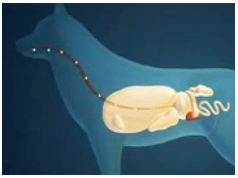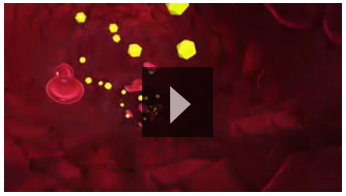Home / AlphaTrak
What is Diabetes?
Diabetes is a condition that occurs when the body cannot process glucose into cells, resulting in too much glucose in the blood and not enough glucose in the cells for energy.
What is Glucose?
Every time your dog or cat eats, food is broken down into nutrients that are absorbed by the body. Glucose, or blood sugar, is one of these essential nutrients. Tissue cells utilize glucose as a source of energy, or fuel, to function.
What is Insulin?

Insulin is a hormone produced by the pancreas that enables glucose to enter tissue cells. As glucose enters the blood stream, the pancreas is triggered to produce insulin. In a healthy pet, insulin attaches itself to receptors on the cell and acts as a key to allow the glucose to enter the cell and be used for energy.
Diabetes occurs when the body either does not produce enough insulin to allow cells to absorb glucose, or when an adequate amount of insulin is produced, but the cells do not react to it correctly.
The difference between these two deficiencies is what determines which kind of diabetes your pet has.
TYPE I: Insulin-Dependent Diabetes
Type I Diabetes occurs when the pancreas does not produce enough insulin. This type of diabetes is most common in dogs.
TYPE II: Non-Insulin Dependent Diabetes
Type II Diabetes occurs when the body produces enough insulin, but the cells do not properly respond to insulin. Type II Diabetes is most common in cats.
The Effects of Diabetes
When glucose is not absorbed efficiently into cells, excess glucose accumulates in your pet’s blood stream. This excess of glucose manifests as symptoms, which you may notice in the health and behavior of your pet. Learn about the signs and symptoms of diabetes.
Copyright © Zoetis 2013-2015. All rights reserved.
The product information provided in this site is intended only for residents of Canada. The products discussed herein may have different product labeling in different countries.

- Argentina
- Australia
- Austria
- Belgium
- Bolivia
- Brazil
- Bulgaria
- Canada
- Chile
- China
- Colombia
- Costa Rica
- Croatia
- Czech Republic
- Denmark
- Ecuador
- Egypt
- Estonia
- Ethiopia
- Finland
- France
- Germany
- Ghana
- Greece
- Hungary
- India
- Indonesia
- Ireland
- Israel
- Italy
- Japan
- Kenya
- Latvia
- Liberia
- Lithuania
- Malawi
- Malaysia
- Mauritius
- Mexico
- Morocco
- Mozambique
- Netherlands
- New Zealand
- Nigeria
- Paraguay
- Peru
- Philippines
- Poland
- Portugal
- Romania
- Russia
- Serbia
- Singapore
- Slovakia
- Slovenia
- South Africa
- South Korea
- Spain
- Switzerland
- Taiwan
- Tanzania
- Thailand
- Turkey
- Uganda
- Ukraine
- United Kingdom
- United States
- Uruguay
- Vietnam
- Zambia
- Zimbabwe
You are now leaving the regional website to access another site in the group.
Regulatory constraints and medical practices vary across regions from market to market. Consequently, the information provided on the site in which you enter may not be suitable for use in your region.



